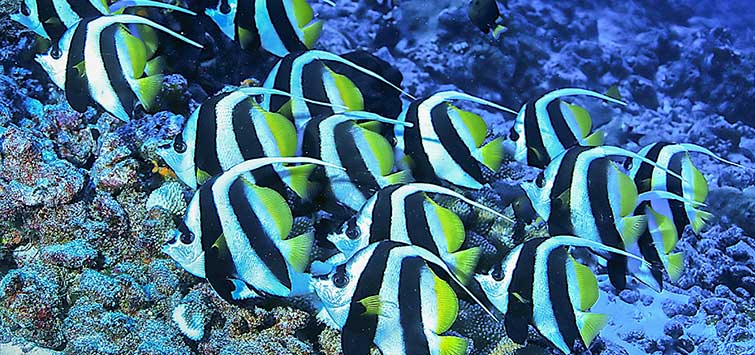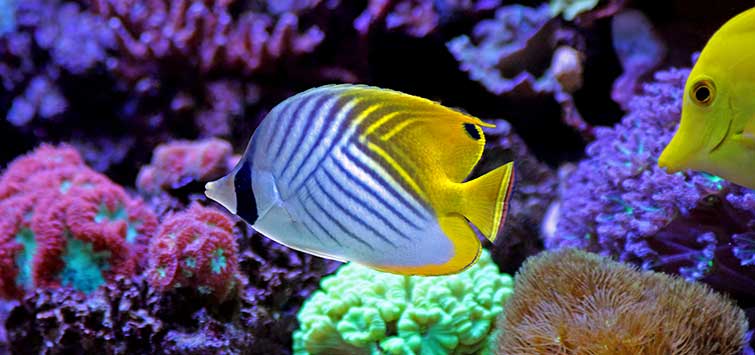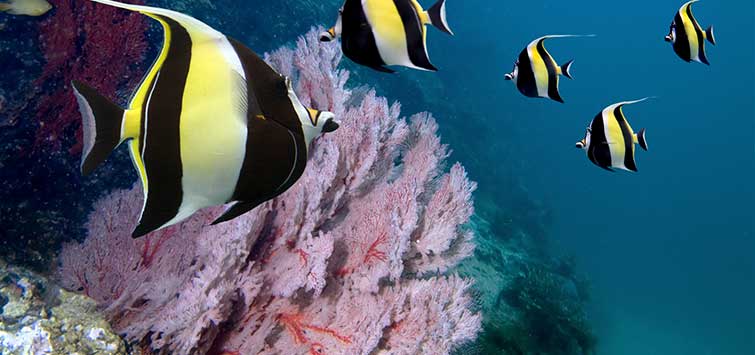Heniochus spp.
Common Names: Bannerfish, wimple, poor man's Moorish idol, banner butterfly, pennantfish
Range: The genus is widespread in the Indo-Pacific, from the Red Sea to Australia. Some species have a rather limited distribution.
Size: 15 to 25 cm TL (6 to 10 inches), depending on the species.
Preferred Water Chemistry: Tropical marine.
Difficulty: Extremely hardy. Generally peaceful and often reef safe.
Tank Setup: Although these fish need the security of holes and crevices, they also require open areas for swimming. They fare best in small groups, but should have about 20 gallons of tank per individual, as adults may become territorial.
Feeding: Largely planktivorous by nature, these fish readily accept small sizes of all types of aquarium foods, best fed in small amounts several times a day. Some species will eat coral polyps.
Breeding: Captive breeding is unknown, and little is known of spawning in the wild.
Description
An elongated dorsal is characteristic. Each species is some variation on black and white vertical bars, often with a yellow overwash.
Notes
The genus Heniochus is a welcome exception to the typical unsuitability of many butterflyfishes for the home aquarium, since those are extremely poor choices, doomed to rapid demise in captive systems. Fishes in this genus, however, excel as aquarium subjects.
Their superficial resemblance to Moorish idols of the genus Zanclus led to the common name, "poor man's Moorish idol," but as Heniochus are often more expensive, this is a misnomer today. A much better name would be "wise man's Moorish idol" or "conscientious aquarist's Moorish idol," since these fish are as hardy and adaptable as Zanclus are delicate and almost impossible to keep alive. Any large system can house a group of these fish, which will add beauty and grace to the collection.
Consult references to determine which of the eight species in the genus are most suitable for your tank in terms of adult size, compatability with sessile inverts, and territoriality. The vertical, laterally compressed, pointy-snouted form of these fish is an adaptation to navigating crevices in the reef structure and snatching food items from nooks and crannies. It also provides a gracefulness that is much appreciated in the aquarium, but is otherwise found mostly among groups full of troublesome sprecies—angelfish and butterflyfish.
Heniochus stand in stark contrast to most of those fishes in being close to ideal choices for a fish-only setup and even for many reef systems.

.png?h=595&iar=0&w=2781&hash=5FD5E69473BCC22199FBFA2FB71B6033)



